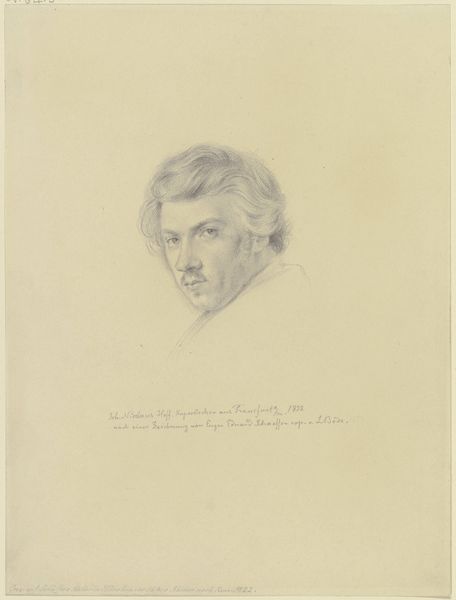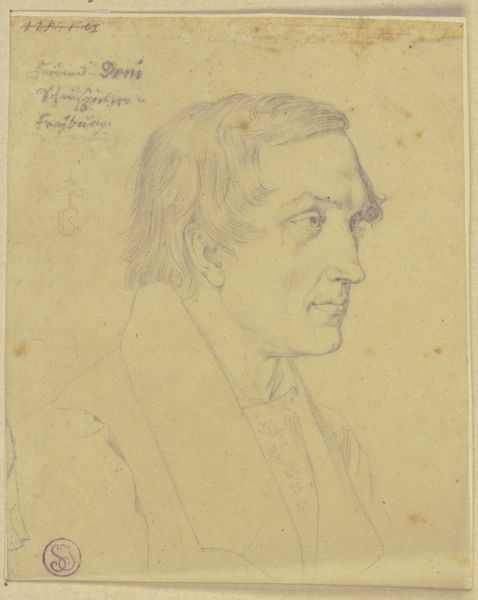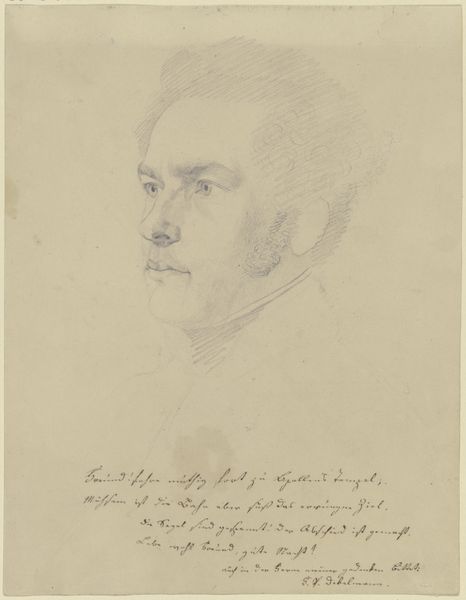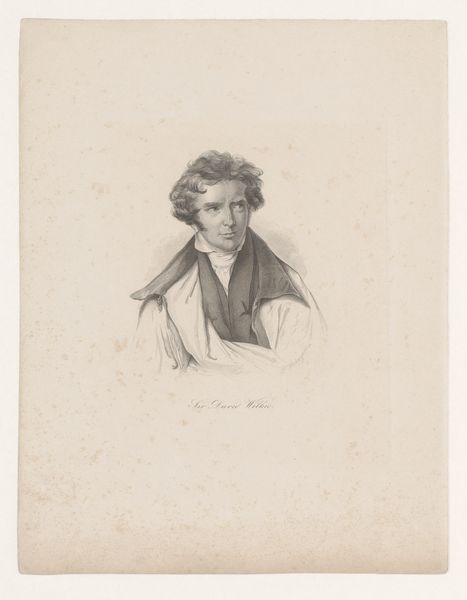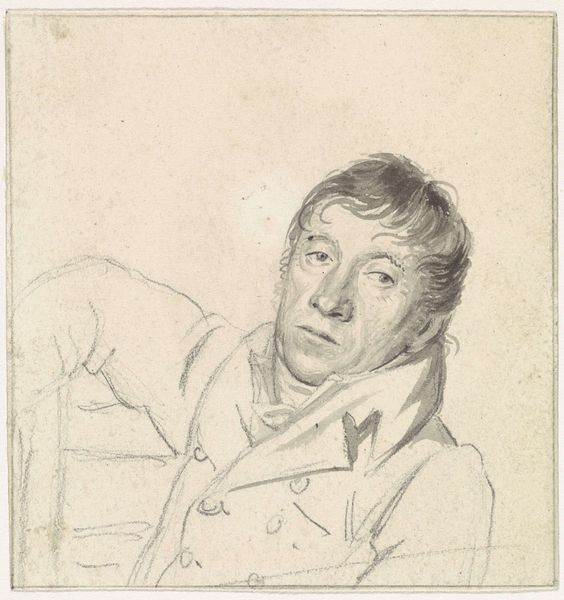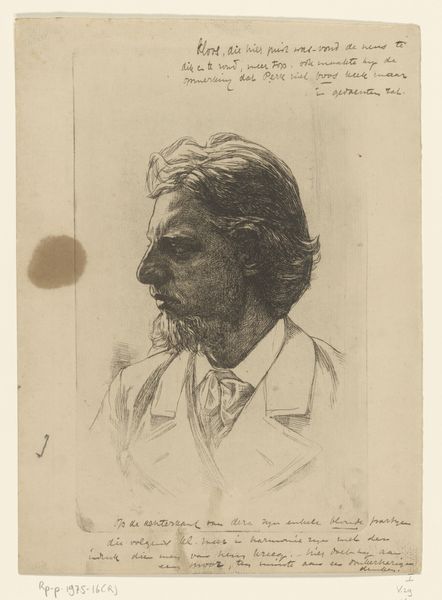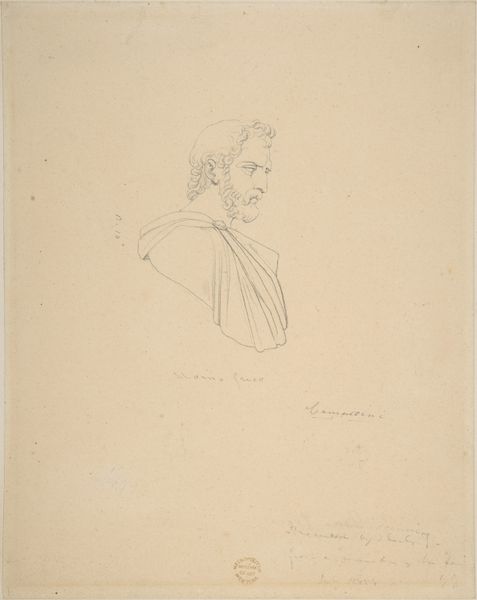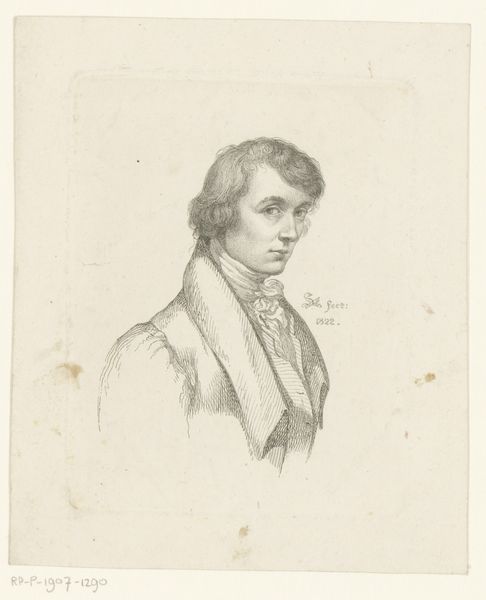
drawing, paper, chalk
#
portrait
#
pencil drawn
#
drawing
#
amateur sketch
#
toned paper
#
light pencil work
#
16_19th-century
#
pencil sketch
#
paper
#
personal sketchbook
#
german
#
idea generation sketch
#
pencil drawing
#
chalk
#
sketchbook drawing
#
pencil work
Copyright: Public Domain
Curator: This drawing is titled *Portrait of Nikolaus Hoff*, completed in 1822 by Eugen Eduard Schäffer. It’s currently held here at the Städel Museum. Editor: The immediate impression is one of delicate intimacy. It looks like it might be executed in chalk or a very soft pencil, almost a fleeting study. There is an element of capturing the subject on the fly. Curator: Exactly! The light pencil work, combined with toned paper, does give it an immediacy, perhaps born of personal interest. Portraits like these often acted as records of personal or familial connection. They reveal the value placed on specific visages within the community. The subject has that characteristic gaze we often see with self portraiture or between intimate relationships. Editor: Considering the process of its making, look at the subtle gradients of shadow Schäffer achieves with simple materials! We must acknowledge the skilled labor here, how these powdered materials of chalk and paper are harnessed to make this image. And how did he arrive at those tools? What craft and industry, and trade enabled that act? The consumer aspect, even with materials used in portraiture. Curator: Yes, the drawing's accessibility belies Schäffer's evident talent. Look closely, and you can trace those individual strokes building volume and texture, yet without laboring the details. But it's the sitter's expression that captures the attention – almost quizzical, slightly melancholy. There’s a tangible sense of internal reflection within Mr. Hoff himself that makes this portrait intriguing. Editor: It certainly brings us face to face with the materials that gave us this intimate gaze; I wonder what Hoff made of the labor expended upon his likeness at the time. Did this physical rendering amplify his cultural capital in the society to which he belonged? Curator: That's fascinating to consider! The artwork serves, ultimately, as a container of stories – of artist, subject, and the intertwined cultures they navigated. Editor: And by emphasizing materiality and production, we remind ourselves that even the most ethereal of images are rooted in a very real and complex material world.
Comments
No comments
Be the first to comment and join the conversation on the ultimate creative platform.
